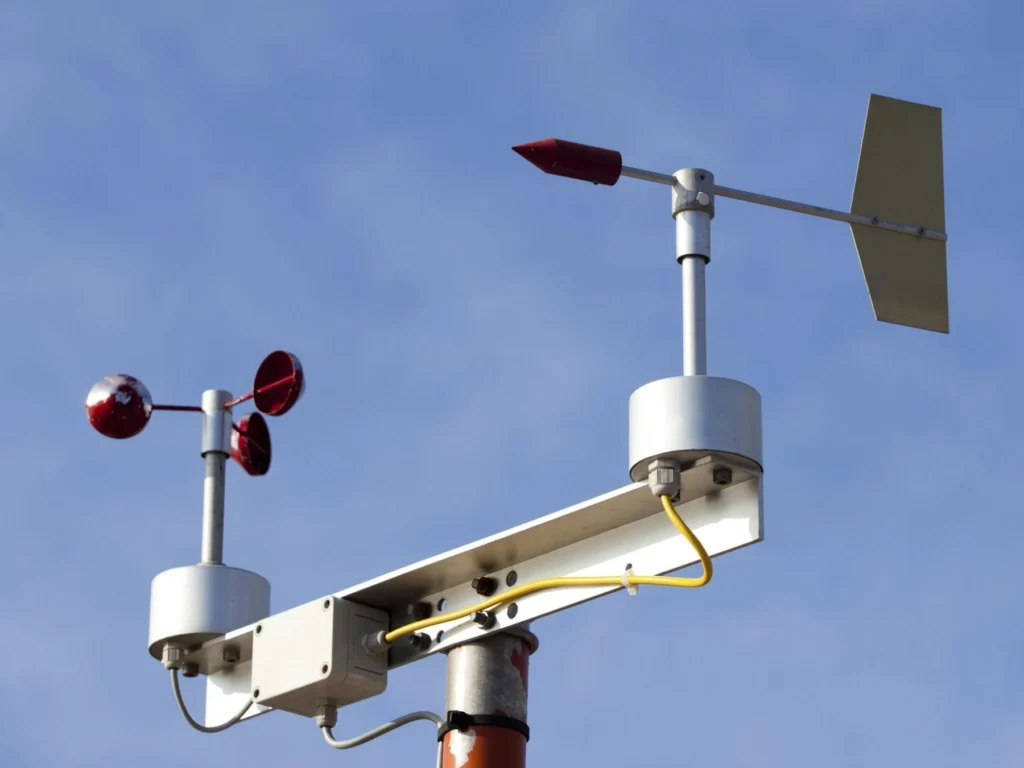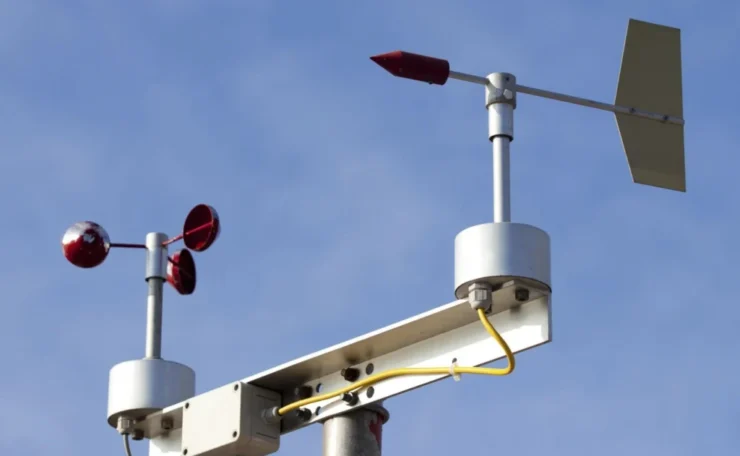
# Anemometer: The Instrument for Measuring Wind Speed
Wind speed is a crucial parameter in various fields, from meteorology to aviation, and even in renewable energy. To accurately measure this vital element, scientists and engineers rely on a specialized instrument known as the anemometer. This device has become indispensable in understanding and predicting weather patterns, ensuring safe air travel, and optimizing the performance of wind turbines.
## What is an Anemometer?
An anemometer is a scientific instrument designed to measure the speed of wind. The term “anemometer” originates from the Greek word “anemos,” meaning wind, and “metron,” meaning measure. These devices come in various types, each with its unique mechanism for capturing wind speed data.
## Types of Anemometers
Over the years, several types of anemometers have been developed to cater to different needs and environments:
1. Cup Anemometers: The most common type, featuring three or four cups mounted on horizontal arms that rotate with the wind.
2. Vane Anemometers: Also known as windmill anemometers, these use a propeller-like design to measure wind speed.
3. Hot-Wire Anemometers: Utilizing the cooling effect of wind on heated wires to determine wind speed.
4. Ultrasonic Anemometers: Employing sound waves to measure wind speed and direction simultaneously.
5. Laser Doppler Anemometers: Using laser technology to measure the velocity of wind particles.
## How Anemometers Work
The working principle of an anemometer depends on its type. For instance, in a cup anemometer, the rotating cups generate a signal proportional to the wind speed. This signal is then converted into a digital or analog reading. Modern anemometers often incorporate advanced technologies, such as digital displays and wireless connectivity, making them more accurate and user-friendly.
## Applications of Anemometers
Anemometers find applications in numerous fields:
– Weather Forecasting: Providing crucial data for predicting weather patterns and issuing warnings.
– Aviation: Ensuring safe takeoffs and landings by monitoring wind conditions at airports.
– Wind Energy: Optimizing the placement and operation of wind turbines for maximum efficiency.
– Environmental Studies: Monitoring air quality and studying wind patterns in various ecosystems.
– Sports: Measuring wind speed in outdoor sports like sailing, golf, and athletics.
## Choosing the Right Anemometer
When selecting an anemometer, consider factors such as:
– Measurement range and accuracy
– Durability and weather resistance
– Portability and ease of use
– Additional features like wind direction measurement
– Data logging and connectivity options
## Maintenance and Calibration
To ensure accurate readings, regular maintenance and calibration of anemometers are essential. This includes cleaning the device, checking for wear and tear, and comparing readings with a known standard. Many modern anemometers come with self-calibration features, making maintenance easier.
## The Future of Anemometers
As technology advances, anemometers are becoming more sophisticated. Future developments may include:
– Integration with IoT for real-time data sharing
– Enhanced durability for extreme weather conditions
– Improved accuracy through AI and machine learning
– Miniaturization for use in drones and other compact devices
The anemometer remains a vital tool in our quest to understand and harness the power of wind. From its humble beginnings to the advanced digital models of today, this instrument continues to play a crucial role in various scientific and industrial applications. As we move towards a more sustainable future, the importance of accurate wind speed measurement will only continue to grow, ensuring that the anemometer remains an essential tool for years to come.
Keyword: instrument to measure wind speed
